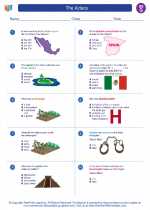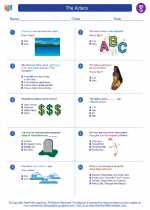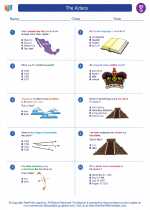Continents
A continent is a large, continuous land mass that is separated from other land masses by water. There are seven continents on Earth: Africa, Antarctica, Asia, Europe, North America, Australia, and South America. Each continent has its own unique physical and cultural characteristics.
Africa
Africa is the second largest continent in the world and is known for its diverse cultures, wildlife, and natural resources. It is home to the Sahara Desert, the largest hot desert in the world, as well as the Nile River, the longest river in the world.
Antarctica
Antarctica is the southernmost continent and is covered almost entirely by ice. It is the coldest, driest, and windiest continent on Earth. Despite its harsh conditions, Antarctica is home to a variety of unique wildlife, including penguins, seals, and whales.
Asia
Asia is the largest continent in both land area and population. It is known for its rich history, diverse cultures, and varied geography, including the Himalayas, the highest mountain range in the world. Asia is also home to major civilizations such as China, India, and Japan.
Europe
Europe is the second smallest continent in terms of land area, but it has played a significant role in world history and culture. It is known for its diverse languages, art, and architecture, as well as its rich history of exploration and colonization.
North America
North America is the third largest continent and is home to a wide variety of landscapes, including mountains, plains, and coastal regions. It is also known for its diverse mix of cultures and its history of immigration and settlement.
Australia
Australia is the smallest continent and the only continent that is also a country. It is known for its unique wildlife, including kangaroos and koalas, as well as its vast, arid interior known as the Outback.
South America
South America is known for its diverse geography, including the Amazon Rainforest, the Andes Mountains, and the Atacama Desert. It is also home to a rich variety of cultures and civilizations, including the Inca, Maya, and Aztec societies.
Study Guide
- What are the seven continents?
- What is the largest continent in terms of land area?
- Which continent is known for its diverse wildlife and natural resources?
- Which continent is the only continent that is also a country?
- What are some of the major geographical features of Asia?
◂Social Studies Worksheets and Study Guides Seventh Grade. The Aztecs

 Worksheet/Answer key
Worksheet/Answer key
 Worksheet/Answer key
Worksheet/Answer key
 Worksheet/Answer key
Worksheet/Answer key
